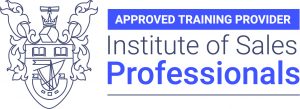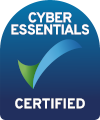I came across these 10 Commandments in some recent reading and thought they were a really useful checklist of ‘dos and don’ts’ when putting together your onboarding process:
The 10 Commandments of Onboarding
Rules to live – and work – by for a divine onboarding experience.
- Thou shalt not bear false witness against thy employee. Few things are more disappointing than the realization that the job you thought you were hired to do is sorely different than what you’re actually doing. As an employer, misrepresenting your employee’s new role destroys trust in you immediately, after which no amount of orientation efforts can undo the initial damage.
- Thou shalt give a written plan of employee objectives and responsibilities. A written plan detailing objectives, strategy and expectations of future results helps diminish any confusion about a new employee’s job functions and instead opens up the floor to discuss concerns or new opportunities.
- Thou shalt give thy employ thy undivided attention. Letting email, phone calls or other employees distract you during orientation sessions sends the message, “I’m just not that into you” and kills morale. Prepare a checklist of subjects to review with your new employees, set aside the appropriate amount of time to do it, and let others know that you are not to be interrupted while you are orienting your new workers. This gives new employees the message that they are the most important item on your agenda. (Or: this lets new employees know that…)
- Thou shalt have relevant paperwork ready. Make sure all administrative forms—such as employment, direct deposit, and benefits—are ready to be completed on day one so you don’t have to waste time dealing with it later, and so that your employee can start getting these important matters taken care of right away.
- Thou shalt introduce thy employee to thy neighbors. Provide staff members with the new employee’s résumé and job description and advise them to follow a meeting format that includes sharing a description of their own positions, ways in which their roles interact with that of the new hire, and how they might expect to work together in the future. (This is also a good time to assign a mentor or buddy to the new hire as an immediate resource for any questions and key information about organizational culture and goals.)
- Thou shall set up thy employee’s workstation. An empty workstation is to a new employee what an unkempt home is to a houseguest. Before the employee arrives on day one, stock his or her workstation with everything from paper and pens to keys and, if possible, business cards. Make sure the phone and computer, complete with voicemail and e-mail accounts, are set up. Leave a copy of an organizational chart, staff list, and phone directory on the new hire’s desk.
- Thou shalt schedule one-on-one time to ensure you connect regularly with the new employee. If you can’t do this on a weekly or bi-weekly basis, schedule meetings to provide feedback at 30- and 90-day checkpoints, or before a semi-annual review.
- Thou shalt create a balance. The first day is always tough. Vary the first day’s schedule by including less formal gatherings between meetings. Arrange for a group of staff members to treat the new hire to lunch on the first day to provide a little non-meeting relief and levity.
- Thou shalt clarify the company culture. Again, to avoid future confusion (or embarrassment), provide the employee with company information, policies – including dress code and late policies – and benefits. If your organization has a new employee handbook, leave that on the desk as well.
- Thou shalt think beyond the first few days. After 90 days, request formal feedback on the new hire’s performance from his or her supervisor, and be sure to solicit feedback from the employee as well. Take this opportunity to address any issues of concern as well as note any accomplishments so that all parties are confident that the new hire is poised for success in his or her role.
You can read the full article here












